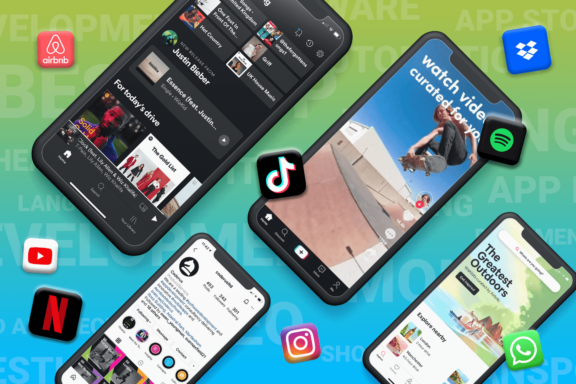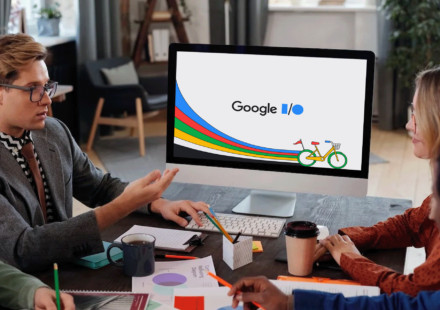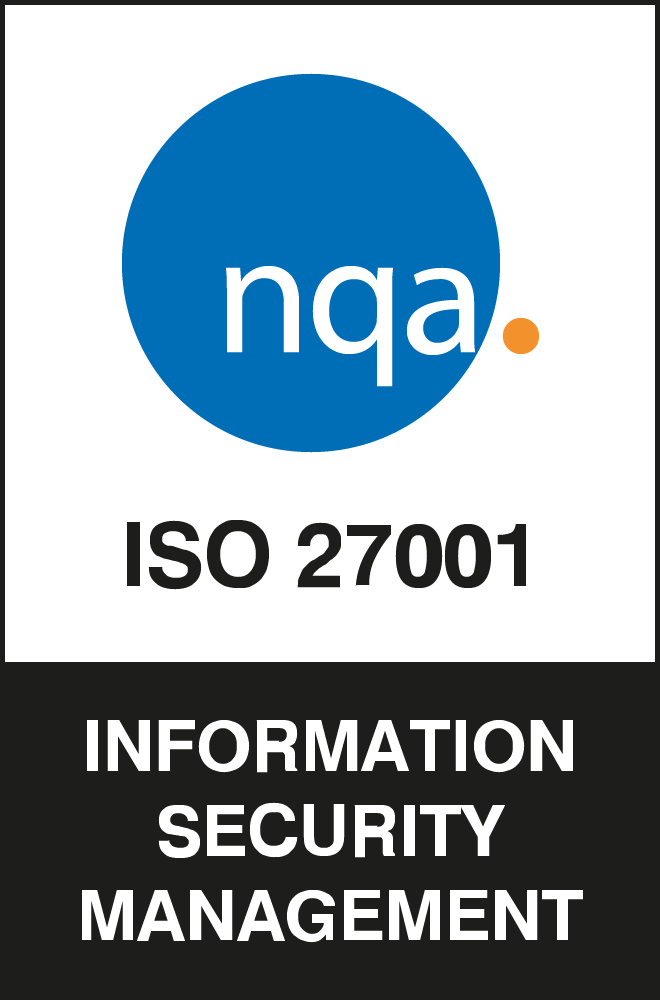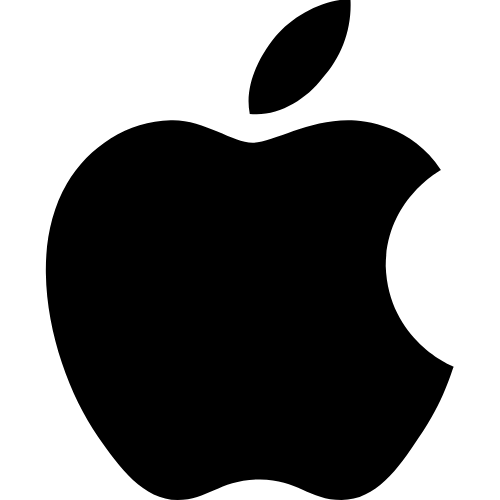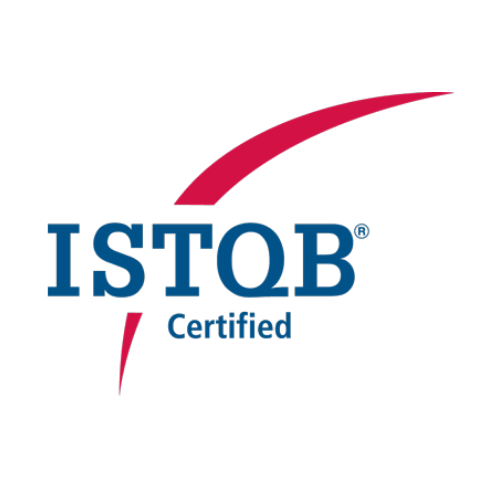What is the difference between a successful app and an app failure?
Why is it that such a significant proportion of all apps created fail at launch before they’ve even had much of a chance to make an impact?
Whilst it may be impossible to summarise all of the reasons why an app may fail, we think we have perfected the strategy for creating a successful app below.
What makes an app successful?
Whilst it is no secret that a successful app needs to be innovative and must add value for the users, this alone is not enough. From the outset, the app strategy must identify and understand its target market and user profile in order to gauge how to best accommodate them via the app.
Perhaps this is why so many developers recommend weighting the workload early on in the build process to ensure that the planning and discovery stage is done right.
Can you think of an app that you use on a regular basis and one that probably would be considered “successful”?
There are two components that I guarantee that app has:
- The app solves a problem.
- The app satisfies a customer requirement.
Take the what3words app for example. This app solves the problem of being able to describe one’s location to another individual, anywhere in the world, simply by dividing the world into 3 meter squares and assigning each square with a combination of three uniquely identifiable words.
This app also meets the requirements of the consumer as no location is omitted and the app is extremely user friendly and easy to explain to new users. Besides the everyday person who can use the app to tell people where they are, the primary consumers of the app are emergency service workers that would previously have no way of pin-pointing a caller’s location precisely, allowing for response times to improve and thus save lives. To be honest, with this kind of technology – opportunities for this app and others like it are endless.
Another key aspect of creating a successful app is determining what success looks like for the app. By defining your success criteria, you are also determining how the success of the app can be measured later on in the app’s life cycle.
There are a few ways to measure the success of your app including utilising Google Analytics.
Components of Successful Mobile Apps
There are a range of universal and key components that most, if not all, successful apps have in some way, shape or form that we believe are the most vital including:
- Clear Product Roadmap
- Unique App Concept
- Usefulness
- Ease of Use & Usability
- Appearance
- Platform Flexibility
- Performance
- Engagement
Clear Product Roadmap
A product roadmap is a high-level visual aid that outlines the vision, mission, strategy, direction, priorities and progress of a product or service over time. It’s a strategic action plan that aligns key stakeholders of an organisation around short-term and long-term goals for a product or service and how these goals will be achieved. A product roadmap is the “what, why and how”.
Having a clear product roadmap will allow you to plan throughout the life cycle of your application. It is also particularly useful when reviewing progress and tracking how you have executed your plan – something that we have already identified as being key when defining and tracking success.
Unique App Concept
A unique app is an app that solves user problems, fulfills customer requirements and contains feature sets or characteristics that are unique to that app and cannot be found in another app.
However, this doesn’t have to mean you need a completely new app idea that no one has thought of before to be successful, as it can also build on and improve an existing idea or app model that may not be solving a problem to its fullest.
For example, Facebook solved many problems when it came to socialising and communication, but it doesn’t mean that there weren’t other successful social media apps both before and after it. & If we are being honest, Facebook built on what Myspace built as well.
Other social media apps were able to capitalise on aspects of the social media problem and customer requirements that Facebook didn’t, such a focus on images or even short video clips as we’ve seen in Instagram or TikTok.
Effectively, give yourself the best chance of success by creating a unique selling point.
Usefulness
Whilst an app’s usefulness can be a relatively subjective matter, it can be generally summed up in the following three words: SOLVE A PROBLEM.
Simply having a cool app isn’t enough to ensure that customers continue to use it. There has to be a necessity to use the app to guarantee regular use. Whilst solving a problem is the underlying base of achieving usefulness in an app, as we mentioned before the judgment itself can be subjective based on user experiences.
It is important to combine research and testing to ensure that the problem is solved effectively, efficiently and with minimal friction to ensure an app is truly considered useful.
Based on our analysis of apps – useful apps tend to:
- Save the user money
- Save the user time
- Protect the user in some way
- Improve the wellbeing of the user (physical or mental health)
- Allow the user to have quick access to data they care about
- Reinforce positive feelings like happiness, reward and gratification within the user
Ease of Use & Usability
Usability and ease of use can either make or break an app. In layman’s terms, if an app appears too complex or difficult for a user to understand, navigate and adopt – they won’t.
User experience can be improved on an app in a few ways by:
- Conducting rigorous testing and research into a user’s interactions and perceptions before, during and after using an app
- Utilising best in class features and components from a usability perspective experiences
- Minimise the cognitive load, i.e the brainpower required by a user when using the app
- Make use of the design systems recommended by the platforms themselves such as Material Design – which is backed by Google
Captivating Appearance
The user interface, also known as the appearance of your app is just as important as its user usability. Everything you include in your app from logos to colours, icons, buttons, typography and more needs to look attractive and unique to the branding of the app while also capturing and evoking emotions of users.
You need to ensure that your app has clear branding that makes it easily identifiable by consumers. You want your app to be so well known that when users look at your logo they know what app or company it is from.
Platform Flexibility
One thing that could hinder your chances of success early on would be to eliminate a large portion of the market by not developing an app that caters for either of the two most popular platforms, being Android and iOS.
Imagine if TikTok wasn’t available on the iOS platform, would this have affected growth and adoption of the app? Almost certainly.
Sufficient planning early on and the use of cross-platform development tools can decrease the time and costs associated with developing apps separately to cater for both platforms.
Strong Performance
Having a strong and solid performance is a great way to build trust with any customer base. Ask yourself this: If an app is unreliable or keeps running into performance issues, how long will you continue to use it? The answer is straightforward in reality, not long.
Getting the performance right from the start comes from a combination of detailed planning, experienced design and rigorous testing – processes that we have mastered at Coderus.
Security is another key component of performance as your app will need to both defend against existing threats and pre-empt future vulnerabilities to ensure that the app doesn’t go offline for customers. Having robust security and the ability to roll out live updates seamlessly will all contribute to a higher performance and reliability rating from customers.
High Engagement
It’s no secret that app engagement is directly correlated to app success. Engagement itself is at the core of what keeps customers returning and depending on your app.
Once you have launched your app, it is important to review KPIs and customer review data to track customer engagement. This data can be analysed and used to implement updates and improve engagement over the life of the app as customer engagement can vary and change as time goes on and alternative apps become available.
Some of the useful KPIs for measuring engagement and retention for apps are:
- Daily Active Users: This is the number of individual users who have used your app in a given day.
- Monthly Active Users: This is the number of individual users who have used your app in a given month.
- Daily Sessions Per User: This is the number of separate sessions per day, per user, which indicates if users are returning to the app regularly throughout the day.
- Retention Rate: This measures how many users return to the app after their first visit.
Mobile App Best Practices
Whilst there’s no set blueprint for success when developing an app, there are plenty of best practices that can be adhered to when developing an app that will certainly aid you in your path to success.
Make Security a Priority
Whilst in the development and growth stages security may not appear to be very significant, however, it is always recommended that you start as you wish to carry on.
Consider how and where you see your final product in your product road map and identify what security features you may need to safeguard the sensitive information that you may end up holding.
Strong security is essential for gaining the trust of any user and will facilitate growth moving forward.
Failure to keep data and users secure will not only damage the app brand image, but will likely lead to financial penalties and consequences that could end an app regardless of how useful it may be.
Research, Research, Research
Put rather candidly, you significantly limit your chances of success if you don’t conduct your research properly. It is extremely typical to first identify the target audience for your app. Once you have determined who the users of your app will be, you can better understand and assess how your app can meet their requirements. Another component of the research stage that will increase your chances of success is to identify and assess your competition, if any, to plan how you can differ from them and add value to the users that they currently aren’t providing.
Never Stop Testing
Whether you are rolling out an update, developing a single component or launching the final product, testing is essential to ensuring a smooth user experience and roll out for your app. Testing is something that is difficult to overdo and should be carried out throughout the product design to identify and fix potential issues as they arise.
Gather Feedback
Innovation and consistent improvement allows a once successful app to remain successful and if the tech world has taught us anything, it’s to never be complacent and to keep improving.
User feedback is a great way to hear directly from the users on ways to make the user experience more enjoyable and to identify potentially unknown bugs with the app that are not identified as part of the testing process. This is an amazingly effective tool in improving the app for future and new users, afterall, if something is an issue for one user, it is likely to be an issue for more.
Want to create a successful app?
At Coderus we have extensive and proven experience with developing apps for a wide range of industries and platforms, so if you think you have the concept required for a successful app, why not get in touch with our award-winning development team to make your idea into reality.
